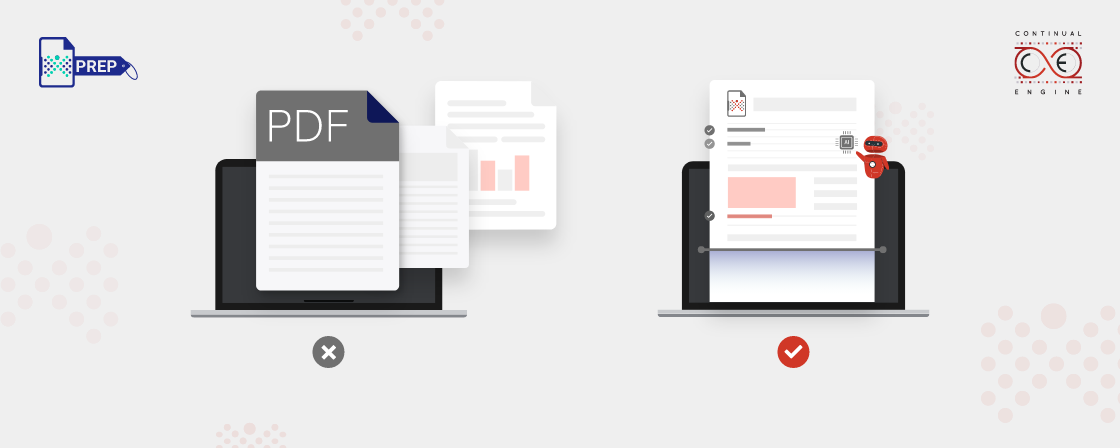Accessibility involves making sure that whatever you create can be used by as many people as possible. Think of it as the online equivalent of installing ramps for buildings or using braille in printed materials—the ultimate goal is to make things accessible to everyone. If your audience faces challenges in quickly and comfortably accessing your content, it can negatively impact their overall experience. The essence of accessibility lies in designing digital experiences that enable people of all abilities to connect with and enjoy the content you produce.
In this guide, we’ll explore why accessibility matters in communication and how it benefits businesses. Plus, we’ll dive into practical tips for creating accessible PDFs and documents that resonate with a diverse audience.
Why Accessibility Matters in Communications:
Alright, so here’s the deal – making your online content accessible is not just a nice thing to do; it’s also a smart business move. It’s like opening up your store to more customers, but in the digital world. When your content is accessible, it reaches more people, engages customers better, and even boosts your chances of turning leads into loyal fans. And hey, it’s not just about numbers – it also helps your brand look good.
And here’s the real thing – when we make our content accessible, especially in crucial moments like emergencies or health-related messages, we’re telling everyone, including those with disabilities, that they matter. It’s like saying, “Hey, you’re part of our community, and we’ve got your back.”
Also, the cool part is – Accessibility isn’t just for people with disabilities; it’s for everyone. Think about it – lots of people, like the cool Gen Z crew and even some Gen Xers (like me), prefer watching videos on mute with captions. Accessibility is like a universal language that speaks to everyone, making content enjoyable for all. Plus, it’s a key player in making workplaces more inclusive, supporting diversity, equity, and inclusion initiatives.
Creating Accessible PDFs and Documents:
- Use Inclusive Language:
AP style is your friend here. It helps you avoid using language that might exclude or stigmatize people with disabilities. Words matter, and when we choose them carefully, we send a message of inclusion.
- Use Descriptive Links:
Instead of generic links like “click here,” let’s be specific. It’s like giving directions rather than saying, “It’s over there somewhere.” Also, make sure those links actually work – broken links are no fun!
- Consider Colors, Contrast, and Text Size:
High color contrast is your go-to for readability. Choose font sizes that won’t have people squinting at the screen. Remember, 12 points (16px) is the minimum for body text – bigger is often better.
- Include Captions on Video Content:
Videos are awesome, but not everyone can hear them. That’s where captions come in. They’re like subtitles for the cool stuff you’re showing. Just make sure to fix any mistakes the auto-captions might make – they’re not always on point.
- Ensure All Images Have Alt Text:
Alt text is like a secret code for screen readers and search engines. Describe your images in words so everyone, including search engines, knows what’s going on.
- Write Simply and Clearly:
Ditch the jargon, keep it simple, and use active voice. Plain language is the way to go – it’s clear, concise, and gets your message across without confusion.
- Avoid Special Characters and Symbols:
Special characters might look cool, but they can mess with screen readers and create trouble for some users. Keep it straightforward for better accessibility.
- Compatible with Assistive Technology:
Finally, ensure your documents play well with assistive gadgets. Screen readers and other tools should smoothly handle what you throw at them. Let’s make technology work for everyone.
Closing Thoughts:
So, there you have it – a guide to making your digital content accessible and inclusive. It’s not just about following rules; it’s about creating a space where everyone feels welcome. From your words to your images and everything in between, a little effort goes a long way in making the online world a friendlier place for everyone. Let’s keep the digital doors wide open for all!
Transform with Affordable Document Remediation
Experience top-tier PDF remediation powered by AI, delivering unmatched quality, precision, and scalability, all at a fraction of traditional time and cost.
